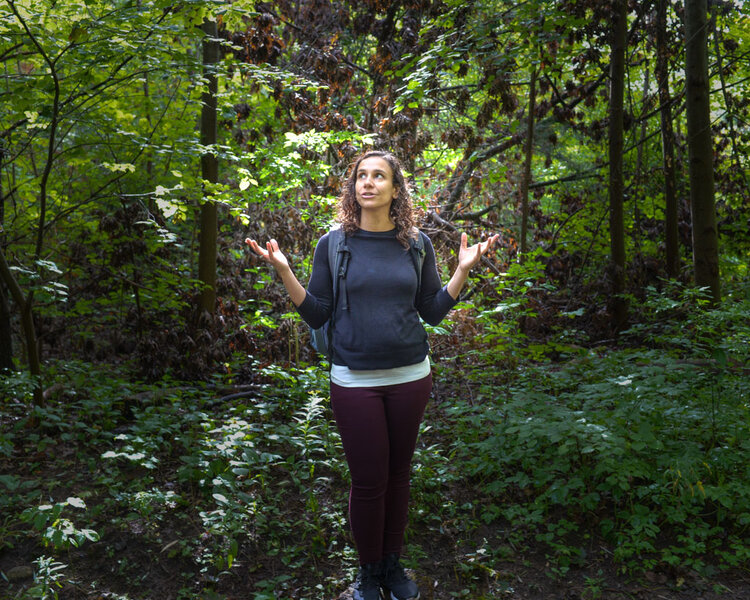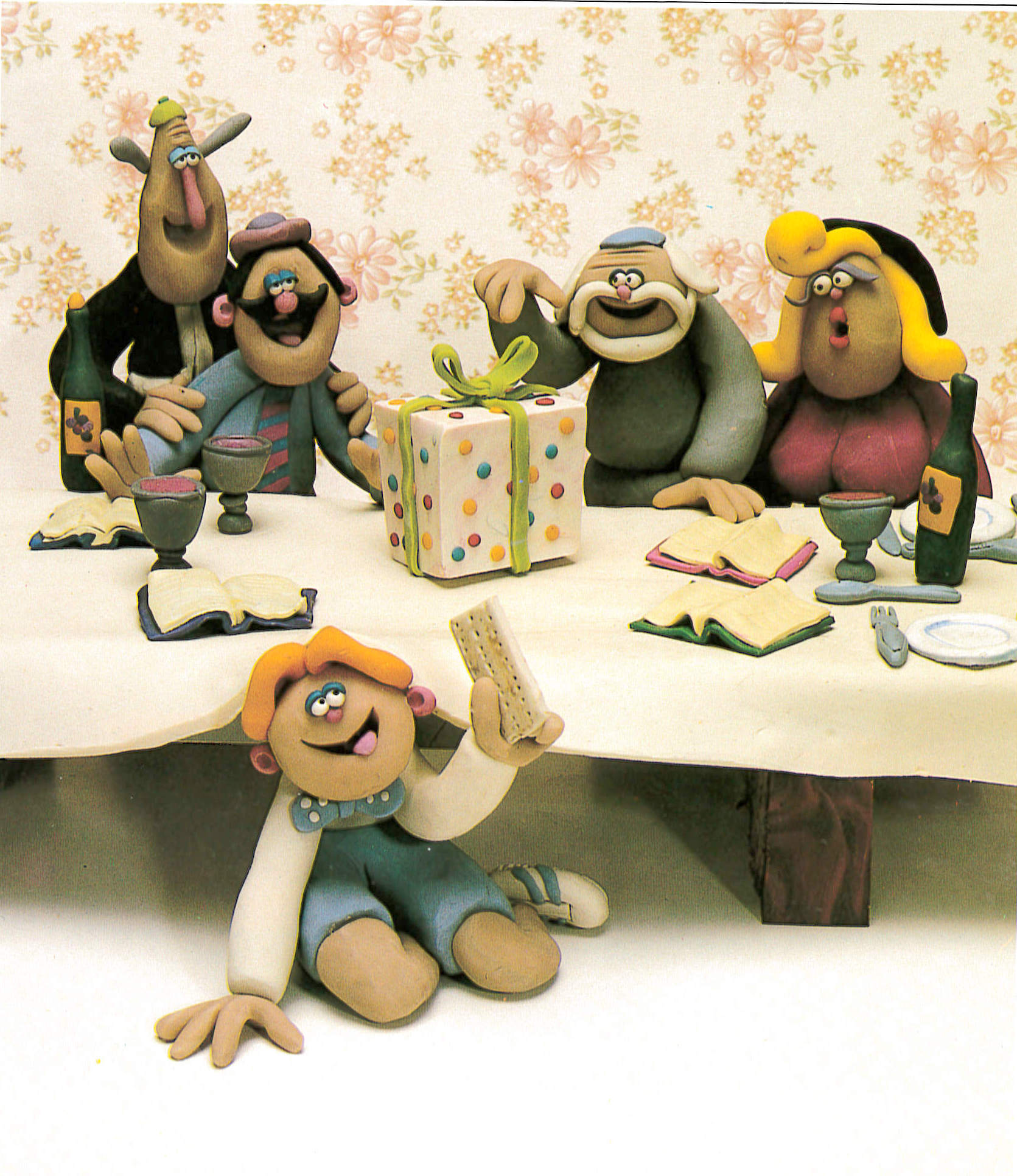1. Go Easy On YourselfTimes are challenging and your seder might not be perfect. That's ok! It will still be meaningful.
Take a moment to say DAYENU for what IS going right and what you DO have. And if you still need a Haggadah, simply download one of our faves.
|
February 02,2021
Posted by Haggadot
Passover is Just 7 Weeks Away & Haggadot.com is Here For Your Organization!
New & long-time partners are invited to the 2021 Welcome Session on Wednesday, 2/10 at 1 pm EST
We will share our favorite collaboration tips, our new partnership guidelines, and preview our new fundraising tools to help you raise money for your community this Passover season. Your organization must register to be a 2021 Featured Partner. We'll share a recording with everyone who registers.
Register here: Wednesday, February 10 at 1pm EST (11am PST)
Schedule a Customized Webinar With Haggadot.com
Our team is also available to bring our webinars to your synagogue, JCC or organziation. Just email [email protected] to schedule your customized session today. Here's our Spring 2021 webinar menu.
How To Seder In 2021: The Zoom fatigue is real, but you can make your seder feel new again. We'll share tips for hosting hybrid seders, creating rituals for the moment & more.
Alternative Seders: Throw away the map! We'll share ideas for hosting alternative seders including all-day seders, a reverse seders, 7th night seders. Spark curiosity among community members and reinvigorate leaders.
Liberated Spaces At Home: As we enter a second pandemic Passover, go beyond spring cleaning to liberate your living spaces from all their spiritual chametz. The creative team at Haggadot.com will guide participants through reflections on releasing the past year and in designing cleansing rituals to use before Passover.
Making A Collaborative Haggadah: A session for educators with creative collaboration prompts, tips for using our tools, and personalized feedback for making your own community Haggadah.
February 01,2021
Posted by Haggadot

Moses, Joe Biden, and Jewish Disability Awareness and Inclusion Month
By Dave Cowen
Hi, my name is Dave Cowen, and this is my second year contributing to the amazing content of the beloved Haggadot.com community, the not-for-profit, crowdsourced Haggadah-making platform. I’m a writer who has published humor in The New Yorker and has had Amazon best selling parody Haggadah books featured in The New York Times.
I’ll be doing a series of three blog posts for Passover this spring. Thank you to Eileen and Rebecca for the opportunity. This first one is particularly close to my heart.
Did you know February is Jewish Disability Awareness and Inclusion Month? JDAIM is a collaborative effort of Jewish organizations across the world every February to promote awareness and inclusion of people with disabilities and their loved ones.
One of the most important Jews in our history and in the Passover story could be said to be disabled. And so it could also be said of our new President. Both had speech impediments!
In Exodus, Moses doesn’t think he’s capable or able to lead the Jews out of Egypt, telling God: “Please, I have never been eloquent, neither in the past nor since You have spoken to Your servant, for I am slow of speech and tongue.”
Similarly, Joe Biden, before his rise in politics, dealt with stuttering throughout his childhood and into his twenties, even into today.
God responds to Moses’ insecurities about his disability by assuring him that when the time comes, Moses will be able to speak well enough. He also says that Moses’ brother, Aaron, will support him.
Similarly, Joe Biden’s mother assured him that his disability wouldn’t obstruct his life goals. Biden said that he still thinks of his mother, who would tell him, “‘Joey, don't let this define you. Joey, remember who you are. Joey, you can do it.’ So every time I would walk out, she would reinforce me. I know that sounds silly, but it really matters.”
Like many in America and in the world, I also identify as disabled. I’ve found that two of the most important ways to handle my disabilities is through belief in I felt earlier in my life. I’ve always thought people need to understand that most of us experience disability at some God’s support and the support system of family, friends, and my professional community.
Since the 2010s, there has been a rise in the disability movement. This has helped to break down some of the discrimination against people with disabilties, which point in life. It’s just a matter of when.
Whether that’s a temporary disablement due to depression or grief, a new permanent disablement due to injury or illness, or the terminal decline of age, the majority of us will either become disabled or will love someone who is at some point in our lives.
What the Passover story and Joe Biden’s rise to the Presidency teaches us is that disability is often part of one’s life but also doesn’t need to define one’s identity. I still write, have worked the same job for the past seven years, have been in long-term relationships, am a good friend, brother, and son, and pursue many other joys and interests.
Now is a time that people with disabilities and people without them can look to our religion’s hero and current government leader as role models that show us that disabilities are just one part of the people we love and/or ourselves.
Happy February and Happy JDAIM Month!
Looking for a kid-friendly inclusion seder? Our partners at MATAN have created an Inclusion Haggadah for children with disabilities. And find our newly-added Inclusion Haggadah for Adults, created by and for adults with disabilities.
November 16,2020
Posted by Haggadot

Just In Time For Chanukah - We're Relaunching Our Holiday Store!
Have you enjoyed Haggadot.com on your computer? Now you can bring us safely into your home this Chanukah season with our signature quirky, creative and fun Jewish holiday store. Shop cards, totebags, ritual objects and more at https://store.customandcraft.org/
Happy Holidays from Haggadot.com!
August 24,2020
Posted by Haggadot

The team behind Haggadot.com, the not-for-profit, crowdsourced haggadah-making platform, has announced the launch of a dedicated microsite for the High Holiday season. Designed around at-home rituals, HighHolidaysAtHome.com is a brand-new platform, democratizing the holidays by making them accessible for everyone, even in the COVID-19 pandemic.
HighHolidaysAtHome.com invites us to bring our whole selves and our beloved traditions into our homes for a season of celebration. The site features ready-to-download Rosh Hashanah seders, Yom Kippur rituals, Sukkot ceremonies, home altar instructions and more. Visitors can also mix and match blessings, songs, prayers, art and videos to craft a personalized experience that reflects their Jewish values and spiritual practice.
“We’re hopeful that the constraints we face this year will ultimately enable radical shifts in our Jewish practice,” said Eileen Levinson, Founder & Executive Creative Director of Haggadot.com. “Each of us is now the designer and director for our own spiritual experience, and our team is excited to use our expertise and technology to empower everyone.”
In the early days of the pandemic, more than 400,000 people turned to Haggadot.com to find a way to celebrate a Passover seder, even when far away from family. Site traffic tripled from previous years as Jews around the world created and downloaded customized haggadot for their virtual seders. Now, the Haggadot.com team is bringing their expertise in blending new technology with ancient traditions to the High Holidays.
“These High Holidays offer a great chance to invent DIY practices!” said Rabbi Denise Handlarski, of Secular Synagogue, an online community where members often collaborate on communal Jewish experiences. “Creating your own at-home practices makes sure you get what you need for a powerful holiday experience.”
Visitors to HighHolidaysAtHome.com are also invited to join webinars offering a collection of DIY rituals such as writing personalized liturgy and creating a ritual life planner for the coming year. Register for upcoming webinars and watch recordings of past sessions here: https://highholidaysathome.
The site offers resources contributed by a diverse community of creators. It recently published Seeker Season: A Guide To The High Holidays For The Curious & Courageous, featuring illustration by Jessica Tamar Deutsch. Several rituals focused on healing, wholeness and release have been shared from The Blue Dove Foundation, an organization committed to addressing issues of mental health and addiction in the Jewish community.
Changing the narrative around who gets to participate in our community has been a key focus for Haggadot.com. “Too often, concerns about financial barriers and physical barriers mean some people are left out of the High Holiday experience,” said Rebecca Missel, Director of Partnerships and Operations at Haggadot.com. “This year, everyone is on equal footing. We are all celebrating at home, together.”
April 24,2020
Posted by Haggadot

April 08,2020
Posted by Haggadot
2. Be CuriousPassover is about asking questions and shaking up the status quo. What are you learning about yourself and your loved ones during this experience? How will you describe this moment a year from now?
10 years from now? We are taking part in history - maybe even consider recording your seder? See how others are adapting their Haggadahs to the pandemic this Passover. |
3. PrioritizeWhat is the one thing you want to get out of this holiday? Does it mean you do a 10 Minute Seder then let the kids color while the adults continue chatting? Do you want skits & laughter? A marathon of song parodies? Being kind to yourself means prioritizing what you need from this moment.
|
4. Mark the beginning, middle & endOur sense of time is a little distorted right now and one day seems to blend into another.
Consider a welcoming & closing ritual to help separate this moment in time, even if it means taking one collective breath to start and finish the gathering. Check out some of these tips for mindfulness.
|
5. Don't let tech get in the wayTonight isn't about technology - it's just a tool to help us connect.
We recommend downloading your PDF Haggadah BEFORE your seder to avoid any stressful last-minute issues. And if you haven't yet, check out our tips for sharing your haggadah on screen.
Whatever happens, it's the people that make the seder special - not the tools. We're here to help you TODAY UNTIL 6:30 PM ET with any challenges that come up.
|
Wishing you uplifting, connective & surprising seders,The Haggadot.com TeamPS - Ready to start Counting the Omer tomorrow? Or want to know what the Omer even is?
Check out our new guidebook of daily rituals & prompts for mindfulness! |
April 06,2020
Posted by Haggadot

The afikoman. In many families, hunting for the afikoman is a highlight of the seder. Often a grown-up hides this half piece of matzah and the children spend the evening searching for it. The grown-ups may even offer small prizes to ransom the afikoman and enjoy it as a dessert to finish the seder.
But when we’re gathering virtually across multiple homes - how do we search for the afikoman? Haggadot.com has a few options to try at your seder.
-
Where’s the Afikoman? Based on the classic Where’s Waldo, take a sheet of paper and draw in a piece of matzah. Then fill in the rest of the scene, making the matzah hard to see. Not so artistic? Download this super tough image from the Haggadot.com contributor Jackie Maris. Or, collage something together and hide a brown rectangle to look like matzah.
-
Create a Scavenger Hunt. Who says you only have to look for the afikoman? Come up with a list of common household items and add something Passover-themed like something green for karpas or topical like toilet paper or hand sanitizer. This is a great way to give kids an active break during the seder. While you meet on Zoom, they can hunt around the house.
-
Hot and Cold. Great option if you’re doing your seder on FaceTime or WhatsApp! The host hides the afikoman somewhere in their house. Then the guests tell the host where to go in their house to “find” it for them. The host brings their phone along with them as they move through their house “searching” based on where the guests tell them to go. You can give extra hints of hotter or colder as you go.
-
Twenty Questions. This one is great for kids to take the lead. Ask the leader to imagine a place in their home where they have hidden the afikoman. Maybe it’s under the couch or inside the bathtub. Then everyone else has to ask yes or no questions to find out where the leader has hidden the afikoman. It can be a real piece of matzah or an imaginary one. You can also do this activity with a landmark like the pyramids in Egypt - it’s thematic!
-
Afikoman Bingo. One of Haggadot.com’s users created this fun Afikoman Bingo activity that is great for adults whose favorite part of the seder is the afikoman. Thanks Nicole!
-
Global Afikoman Hunt. Carmen Sandiego meets Passover with this brand-new app. The afikoman is hiding somewhere in the world! Watch a series of short videos and answer trivia quesitons to find the afikoman while learning about global Jewish communities.
Whatever you choose - this is the year to get creative with the afikoman and all parts of your seder.
Happy Passover!
April 03,2020
Posted by Haggadot

Throughout history, the Jewish people have faced more than our share of challenges, obstacles, and oppression – and through it all, we have persevered, proving ourselves resilient, enduring, and adaptable. That is the crux of the story we tell each year on Passover, as we sit around our seder tables and read together from the Haggadah.
This year, though, we are all in the unprecedented position of being largely unable to observe Passover in person – at least not in the communal ways to which we’re so accustomed. There will be no hosting one another in our homes, no gathering together for congregational seders, and yet, there is still so much opportunity for us to come together and to celebrate in community.
Across the planet, the Jewish people are planning and preparing for a new kind of seder, one facilitated by modern technology. Yes, we are separated by physical distance, but in some ways, the unique circumstances of this moment may bring us closer together than ever, putting an emphasis on relational connections and ritual intention.
Indeed, this year’s Passover observance offers a particularly unique occasion to do what Passover has always been intended to do – tell a story. It is the story of the Jewish people and how we, as a community, have always come together in challenging times to find a way to freedom.
The Haggadah is one of many vehicles for telling that story. In creating our own Haggadot, then, we have an exciting opportunity to think about exactly what we want to say, how we want to say it, and how we want it to be heard.
Do we want to tell the story with humor? With deep, spiritual resonance? With both? Is our story told from a universalistic perspective or a more particularistic lens? Which parts of the story do we want to emphasize? How will we connect this ancient story to other themes and stories of our modern era?
All of these questions and more can guide us as we craft our telling of the story of moving from slavery into freedom. Our story is one of freedom and redemption, and in choosing our Haggadah text, we even have the opportunity to experience that freedom in the text itself.
In a time when all of us, globally, are experiencing such a frightening moment in time, the Passover seder – and, specifically the Haggadot we use – gives us the much-needed ability to share in something beautiful, sweet, and fulfilling… together. Just like any good story does.
Rabbi Leora Kaye is director of program for the Union for Reform Judaism.
April 01,2020
Posted by Haggadot

Hello Haggadot.com Seder Planners! We’ve heard our users are getting creative with their seder plates this year with so many virtual Passovers.
One tip we recommend, when you are hosting your own virtual seder, is to devote extra electronic equipment to filming the seder plate. For instance, you could set up your child’s iPad to stationarily film the Seder plate throughout the service. This way your guests can always have a Seder plate at their table even if they are not able to make a full one of their own.
We also recommend hosts nominate guests to display parts of the seder plate at their respective locations. For instance, the host could have the maror, charoset, parsley, salt water, and matzah at their house in New York, while the older sibling could have the shank bone in their apartment in San Francisco, and the grandparents could have the egg in their assisted living home in Florida.
If you’re not able to get all the seder plate items or if preparing food is just too much for you this year - you can print images from Haggadot.com for those items.
With grocery shopping limited for many people, this is the year to creatively add or substitute seder plate items. Make do with what you have or find new ways to symbolize the holiday.
Maror is the bitter herb, which helps us to remember the bitterness of the slavery our ancestors suffered in Egypt. We usually use horseradish for the symbol, but one creative ingredient you could use might be ginger root. Not only is it bitter, but it is also a medicinal herb that reminds us of the suffering of people suffering from COVID-19 and the medicinal work of doctors around the globe.
Z’roa is the shank bone, which represents the lamb that was sacrificed by the Jews to protect them from the plague of the firstborn. It might be difficult to find lamb at the grocery store, and you might not want to do an extra errand to the butcher, so a bone from any piece of meat or fish would be more than OK. Another fun substitution is a piece of cured meat, which is a form of meat that keeps for a long time during this crisis and also has the added pun of being cured :) And vegetarians have used beets in place of the shank bone for years.
Charoset is a mixture of fruits, nuts, and wine to resemble the mortar and brick made by the Jews when they were slaves under Pharaoh. The Ashkenazi tradition calls for apples and walnuts, which have also been listed as food for healthy lungs. Some other fun substitutions that boost immune systems are almonds for the nuts and blueberries for the fruit and green tea for the wine. But, like us, many of you will want to cherish our freedoms as much as possible and keep the wine :)
Chazeret is the second bitter herb. If you wanted to have one traditional horseradish and one ginger bitter herb to symbolize the medical workers this would be the place to do it. We’ve also read that many people use wilted lettuce to symbolize the lack of fresh food at grocery stores in low-income neighborhoods and poor countries in the world.
Karpas is the symbol of the spring harvest and new beginnings, which is typically represented with parsley. We’ve noticed a lot of people on social media foraging in their backyards, neighborhoods, or nature areas for fresh greens during these times. This is a perfect moment, the spring, to forage for your own karpas before your seder or to use anything green you have in your home
Beitzah is an egg that symbolizes the circle of life, new beginnings and hope. Many of us have noticed that sometimes the most basic food ingredients are the most comforting during all this. If you are running low on eggs, perhaps consider another basic food ingredient like a cup of milk, which would similarly signify the nourishment of new life.
Oranges have a long and varied history at the seder table. They can represent women and feminism or female heroines like Miriam, Moses’ sister. And certain Jewish scholars, like Susannah Heschel, have pointed out that the orange can also honor lesbians and gay men. However, you want to denote this symbol, it takes added importance as another symbol of wellness with its high levels of vitamin C.
Artichokes are another recent symbol that have been added to acknowledge interfaith marriages and all forms of inclusion. It’s been said that the Jews, who have normally been thorny about interfaith marriages, should open up the softness of their hearts. Especially during these times, when we realize how interconnected we all are, an artichoke could be a powerful symbol to add to your Seder plate.
Olives have also become popular, even literal olive branches if you have them, as symbols that represent the hope for lasting peace in the Middle East and everywhere.
We also love these new additions:
Spices for the creativity and flavor we're bringing to life during our seders this year.
Root vegetables like potatoes, onions & carrots for staying grounded in difficult times.
Salt & sugar blended together for our human ability to reframe the narrative and being able to hold two different feelings in our hearts at the same time.
Canned food or dried beans to represent what’s sustaining us in these times and for how we have had to seal ourselves off from the outside.
And, for a bit levity, a small bottle of Hand Sanitizer to the seder table, if maybe not the seder plate itself. If you feel like your family could enjoy the ironic, gallows humor, embrace it!
Click here for more seder plate ideas, or visit the 2020 Second Seder Plate from Jewish World Watch.
We’d love to hear more suggestions from you all. Please feel free to add your ideas to our Facebook Seder Planner group page!
April 01,2020
Posted by Haggadot
1. Join Us This Friday at 12pm EST for Virtual Office Hours
2. Join us Sunday, April 5 for a Prayer Writing Workshop with Trisha Arlin
3. Reminder: Check out Webinar: The Art of Virtual Seders
We've had a tremendous response to our free webinar with tips for hosting your very own virtual seder. You can view the recorded session & presentation on our blog. Want to schedule a private webinar or Q&A session for your community? Email us!
4. Site Maintenance: Tonight 3am EST / 1am PST
Heads up night owls: Haggadot.com will be offline for about 90 minutes starting at 3am EST tomorrow morning (4/1) while we upgrade our servers AGAIN. If you’re up all night working on your Seder, 1) remember to save and 2) maybe try to get a little sleep? ;)
5. We Have So Much New Content!
We've been added resources daily to help you make you seder great. Check out our Coloring Book Haggadah, Secular Haggadah, Minimalist Haggadah, and 2020 Favorites.
6. Join us April 12 for Haggadot.com's Virtual Seder
Finally, mark your calendars for 2 pm ET /11 am PT on 4/12 for our own virtual seder! Join our team and journalist, Esther Kustanowitz, plus special guests for an everyone-welcome, fifth night seder.